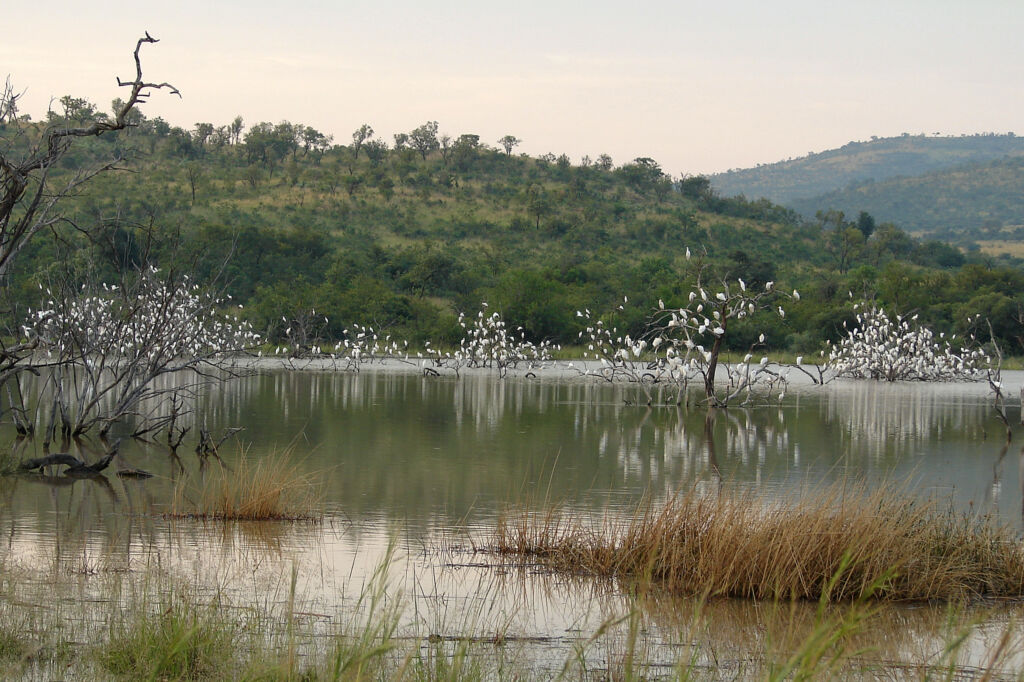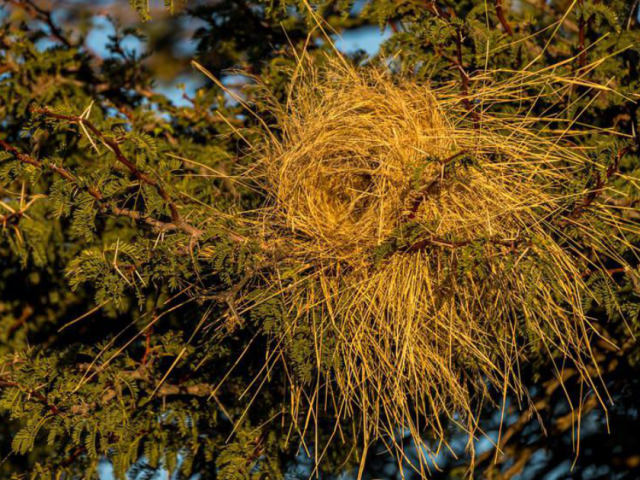South Africa is famous for wildlife conservation and is recognized as a global leader in the management of wildlife resources, considered number three in the world in terms of biodiversity conservation. This has been achieved through the hard work of active management and careful intervention.
The many landscapes within South Africa offer a full spectrum of habitat types (from dense green forests to arid red deserts, and everything in between), making them an ideal home for a wealth of species. Wildlife comprises all living organism in their natural environments. These environments are, however, facing numerous threats, including habitat loss and degradation, fragmentation, the spread of exotic plants and animal species, pollution, and human disturbance among others. These all contribute to the loss of species diversity and abundance. This, coupled with the ever-increasing presence of humans, has given rise to populations of wildlife in South Africa which are increasingly confined to protected areas.
These protected areas, no matter how large, need to be managed to a greater or lesser extent, either through fences erected to contain animals, wildlife population management strategies, or the establishment of artificial water holes to provide water for wildlife use, and maximize access to resources in areas with little natural water supplies, especially during the dry months within these arid environments.
Maintaining this balance in a largely artificial world requires management. There are very few natural wildernesses left in the world, and once a property is fenced, it needs to be managed. Tswalu Kalahari Reserve is first and foremost an ambitious, successful conservation project. This has resulted in the expansion of the property over time and the widespread conversion of areas formerly used for livestock being incorporated into the property. The historical management of this land has often resulted in sub-optimal or degraded areas in need of management intervention. The overarching conservation goals of Tswalu are linked to the past, present and possibly the most important, the future management of the southern Kalahari, being to restore the natural environment, re-establish and protect biodiversity, through maintaining the Kalahari’s characteristic ecological processes. The overall management of these processes is complex and requires an understanding of the various components that enable processes to exist through research, conservation, and wise management of the wildlife resources in the southern Kalahari.
In essence, wildlife management is “management by intervention” and “adaptive management”. In this way, resource management interventions, either passively or actively, accumulate data needed to improve future management. This important tool is used to not only to make changes within the system, but also learn about the ecological processes that drive them. Wildlife management is in essence the management process influencing interactions among and between wildlife, their habitats, and people, to achieve predefined and desired impacts. It attempts to balance the needs of wildlife with the needs of their environment, using the best available research. In a man altered world, balance is required to prevent over- or under-utilization of the environment.

The most important aspect of wildlife management is managing habitat for the multiple species at the different trophic levels occupying that environment. This provides species with the essential elements needed to meet their needs, without negatively impacting the environment. As mentioned, wildlife management is maintaining balance through the regulation of the population of different species, maintaining balanced food-webs, while ensuring the correct ratios of producers, consumers, and micro‐organisms. There are certain natural events such as droughts, which in some cases can be prolonged, which impact natural cycles, nutrition, and the circulation of nutrients in the environment. Planning and management are required to navigate these events without long-term negative impacts on the environment. This involves allowing for the successional process of recovery to occur, to ultimately return to a semi- or climax state.
Wildlife management also plays a role in ensuring genetic diversity and gene flow through the introduction of “new blood” to bolster genetic vigour. A healthy ecosystem is dependent on all components of that ecosystem being present, including scavengers and decomposers of wild animal carcasses, such as hyaena, jackals and vultures, but also invertebrates and micro‐organisms, which feed upon dead animals, ensuring an effective and fast nutrient cycle, and the resultant fertility of the soil. Wildlife management is very much about soil conservation, and preventing soil erosion, which may be reduced or even prevented by sufficient plant cover, litter, as well as the mixing of litter by trampling of animals and the breakdown of organic matter by micro‐organisms.
Management initiatives and conservation outcomes are typically focused on the large charismatic species like rhino, buffalo, lion or cheetahs. However, good wildlife management takes a holistic approach, measuring how all groups of species respond to the landscape, and how the vegetation reacts to this impact, defined by varying management and conservation models, supporting an approved management plan. Wildlife management plans are essential for properly managing wildlife habitats, populations, and tourism. A management plan is a description of the short-term objectives and long-term goals met by managing the habitat, wildlife populations, and people, and how these objectives and goals will be reached.
Historically, management plans have focused primarily on increasing abundance of game species and maximizing tourism opportunities. Currently, there is an added emphasis on management plans addressing threatened and endangered species and their habitats, game populations that are not classified as rare, overall biodiversity, and quality and abundance of game species populations.
It is naive to think that management of wildlife habitat or populations is unnecessary. The various landscape-level interactions, and human-induced and natural cycles constantly change the environment, including the potential carrying capacity for many species over time times. For wildlife management to be effective, it requires constant monitoring, accurate data collection, and the ability to be adaptable.
END
- Harmony with Nature: A Call for Sustainable Development Rooted in Biodiversity Conservation - May 22, 2025
- Science Beyond Boundaries - October 2, 2024
- Climate Change – Is enough being done to address the global threat? - November 26, 2023
Additional News
Pangolins are elusive and heavily trafficked. At Tswalu, researchers are working to uncover their secrets and aid conservation.
Declining Sparrow-Weavers may threaten other birds that rely on their old nests for shelter.





